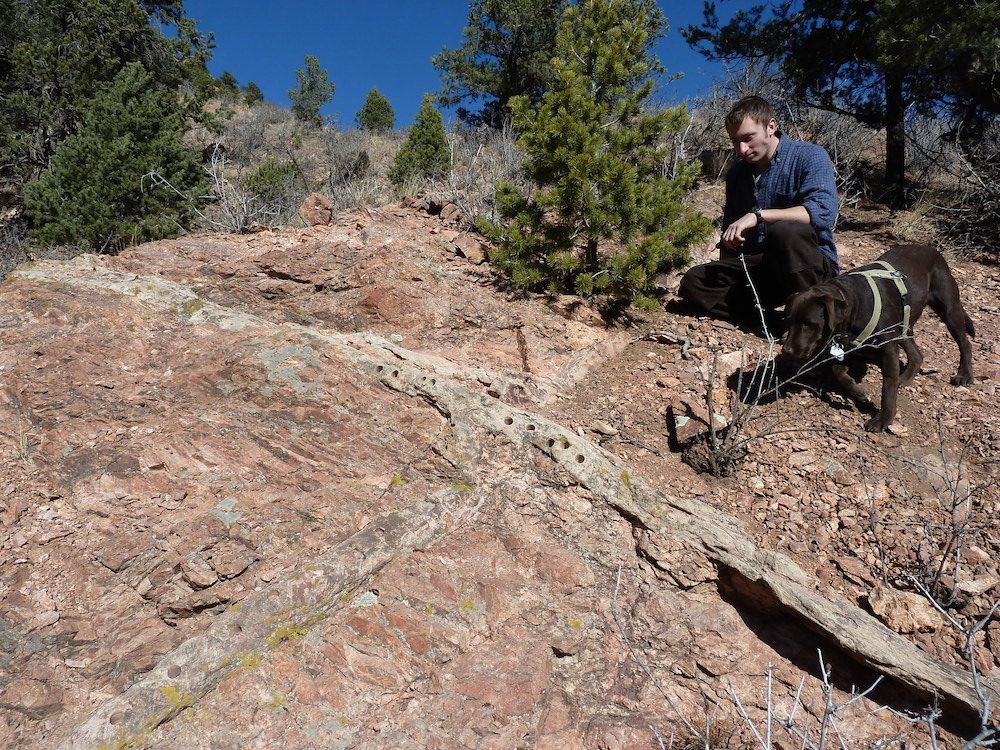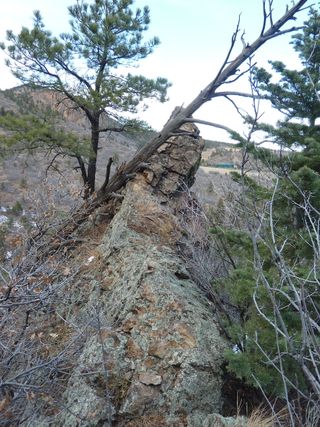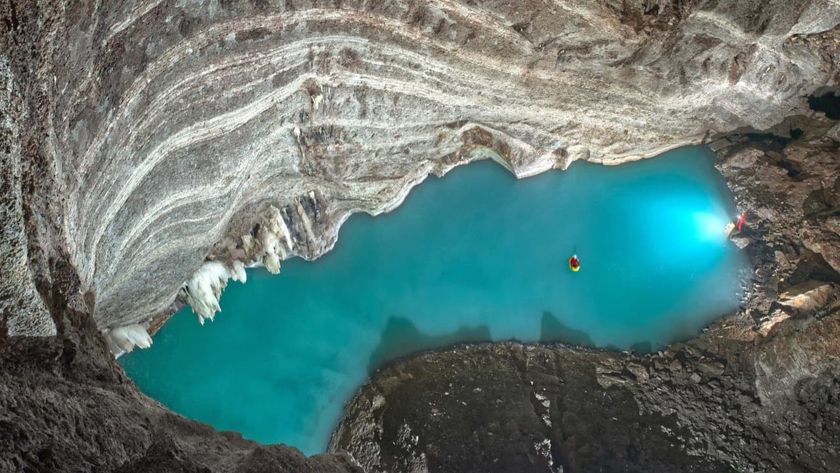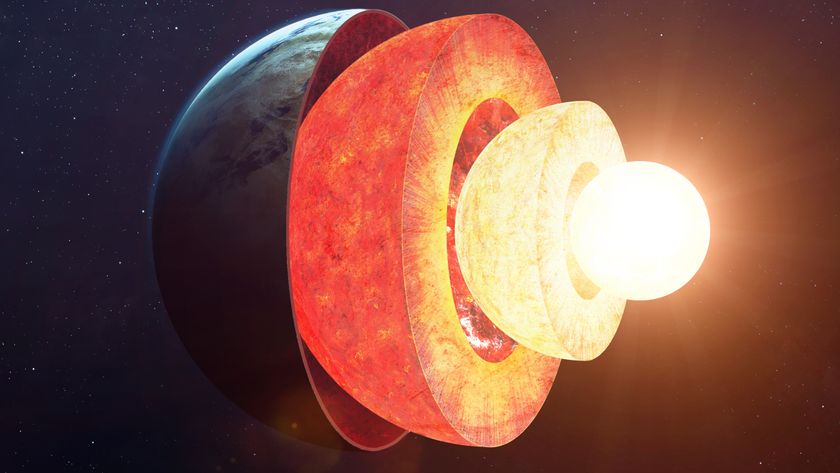Mysterious Colorado Rock Formation May Be Result of 'Natural Fracking'

An ancient, catastrophic flood or earthquake may explain how a bewildering rock formation in Colorado's Rocky Mountains formed, a new study finds.
For more than 120 years, geologists have wondered how giant chunks of Tava sandstone, a sedimentary rock, had become inserted into a section of the igneous rocks that shape the backbone of the Front Range, within the southern Rockies. Scientists call formations where one rock is inserted into another "intrusions."
The rocks within the formation are "reversed from what we would ordinarily expect," said the study's lead author, Christine Siddoway, a professor of geology at Colorado College in Colorado Springs. Typically, it is igneous rocks, such as granite, that intrude into sedimentary stone. [Images: Magnificent Geological Formations of the American West]
It's extremely unusual to find sandstone that has forced its way into granite, making the Colorado formation a rare find, Siddoway said.
Intrusions of sedimentary rock into granite-type rock "speak of a catastrophic event," she said, such as an earthquake or flood. An earthquake can cause sediment to liquefy, as it did during the 6.0-magnitude earthquake that hit Christchurch, New Zealand, in 2011. It could have been another large earthquake that forced the sedimentary sandstone into the granite in Colorado, she said.
Or, it could have been rapid-moving floodwaters that lodged the Tava sandstone sediment into a fracture in the granite, explaining the intrusion, Siddoway added.
Whether it was an earthquake or a flood that set the formation into motion, the intrusion as we see it today can be explained by "natural fracking," she said. The fracking that we usually hear about is human fracking, in which machines are used to pump water underground to create enormous pressure to crack open rocks deep in the ground, so that fossil fuels can be extracted. But nature can cause fracking too — rocks crack open underground and then particles such as sand fill in the spaces.
Sign up for the Live Science daily newsletter now
Get the world’s most fascinating discoveries delivered straight to your inbox.
"On a very grand scale, what allowed the Tava sandstone dikes to form is analogous to what happens on a small scale by human-induced pressure fracturing," Siddoway said.
Rock of ages
The new study also hinted at how old the Tava sandstone may be, another riddle that has perplexed geologists.
The researchers analyzed samples from the sandstone that consisted mostly of quartz, with pieces of feldspars, micas, magnetite and zircon, which is both a mineral and a semiprecious gem.

"[Zircon] is the workhorse for isotopic dating of rocks to find out their age," Siddoway said. "The wonderful thing about zircon, that makes it a good gemstone, is that it's very hard and difficult to cut. It remains in the sedimentary record for a long time."
As soon as zircon forms, radioactive elements in its structure start to decay at a known rate, allowing scientists to date it. In this study, the geologists looked at tiny zircons in each sample, and then compared them to zircons in other sedimentary rock samples of a known age, Siddoway said.
The Tava sandstone zircons, however, did not match those from 65 million years ago or 500 million years ago, as other researchers had suggested.
"I was utterly shocked to find that," Siddoway said.
Instead, the zircons in the Tava sandstone matched those from rocks from California's Death Valley and the Grand Canyon, the researchers found.
By comparing the Tava sandstone zircon to these other samples, the researchers determined its age is between 680 million years old and 800 million years old. That means that at the time the Tava formed, the continents were in a supercontinent called Rodinia, which had nothing but single-celled microbes. Colorado may have been near or south of the equator.
"Earth would have looked like an unvegetated, rocky planet, like some of our neighbors in the solar system," Siddoway noted.
She plans to continue to study the sandstone. "And as work continues, I'm very confident we'll be able to refine that to a more narrow range of age," Siddoway said.
The study was published online Aug. 27 in the journal Lithosphere.
Follow Laura Geggel on Twitter @LauraGeggel and Google+. Follow Live Science @livescience, Facebook & Google+. Original article on Live Science.

Laura is the archaeology and Life's Little Mysteries editor at Live Science. She also reports on general science, including paleontology. Her work has appeared in The New York Times, Scholastic, Popular Science and Spectrum, a site on autism research. She has won multiple awards from the Society of Professional Journalists and the Washington Newspaper Publishers Association for her reporting at a weekly newspaper near Seattle. Laura holds a bachelor's degree in English literature and psychology from Washington University in St. Louis and a master's degree in science writing from NYU.
Most Popular




